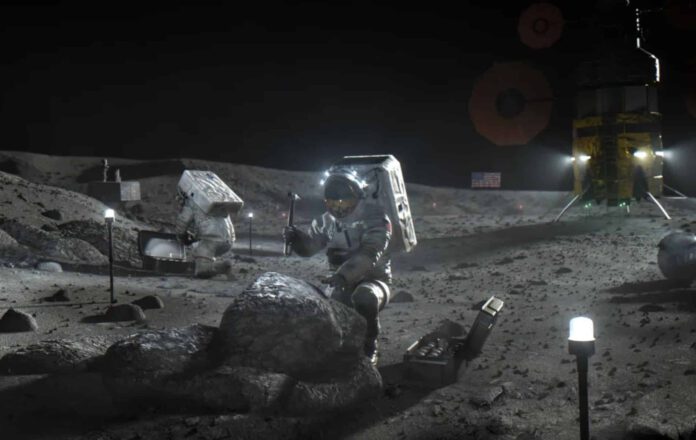
In a few short years, we are looking forward to seeing the esteemed astronauts touch down on the moon once more. But this is going to be far from a leisurely visit, there’s a ton of work to be done. NASA has started selecting the first instruments that the astronauts will have to work with, thereby starting to shape their to-do list.
The Artemis III Mission
The selected tools will be deployed during the highly anticipated Artemis III mission. During this paramount exploration project, two astronauts will descend onto the lunar surface and conduct near-week-long research near the south pole of our moon. However, as eager as everyone is, the mission, planned for the fall of 2026, has experienced several postponements. Its feasibility also relies heavily on the success of upcoming deployments, such as Artemis II. Nevertheless, these uncertainties aren’t dampening NASA’s drive to plan and prepare for the manned moon mission — identifying all the necessary equipment and duties is a priority.
The Selected Instruments
In this regard, the first significant steps have been taken. NASA has selected the inaugural instruments to be employed by the astronauts on the lunar surface during the Artemis III mission. The selected tools comprise LEMS, LEAF, and LDA, acronyms that may not ring a bell yet. Let’s delve into a brief explanation of these unique devices.
LEMS
LEMS, standing for Lunar Environment Monitoring Station, essentially acts as a compact and autonomous seismometer. The tool is designed to register moonquakes occurring near the south pole. These seismic events, influenced by the moon’s crust and mantle as they traverse them, can divulge crucial insights into the moon’s constitution. Such information will allow researchers to refine their theories about how our natural satellite was formed and evolved into its current state.
LEAF
LEAF, an acronym for Lunar Effects on Agricultural Flora, will be involved in a unique experiment that aims to cultivate crops on the lump of astral rock. The experiment will analyze how (and if) plants grow and develop, specifically focusing on how they’re affected by the moon’s limited gravity and radiation near the south pole. This agricultural exploration is a critical step for NASA, aiming to enable astronaut self-sustainability during extended lunar stays. The ability to grow food on the moon is more economically viable and logistically manageable than transporting it all the way from Earth. Moreover, the expertise gained from successful lunar farming will be invaluable for future manned missions to Mars, where self-sustainability in food production is imperative for survival during the prolonged travel period.
LDA
The Lunar Dielectric Analyzer (LDA) is an instrument designed to measure the conductivity of regolith, the fine-grained layer covering the moon’s rocky surface. This measurement becomes increasingly important as the lunar dust increases conductivity when ice particles attach to the dust grains. Thus, this instrument could aid in the detection of water ice, a vital resource for serving as a source of drinking water and fuel, reducing astronaut dependencies on Earth.
NASA’s decision to activate these three instruments during the Artemis III mission is strategic. Each of them can contribute significantly towards achieving the scientific goals within the Artemis program. These include gaining a better understanding of lunar processes (like quakes) and the origin and nature of moon’s south pole resources (including water ice), as well as reducing the risks associated with human exploration on the moon. Furthermore, note that these are not instruments that a robot can install—they require human involvement on the lunar surface.
As for who will be the lucky ones to do these tasks, the specific individuals are not yet known. A year ago, NASA did unveil the quartet set to venture into the stars during the Artemis II mission, composed of three American astronauts (two men and a woman) and one Canadian male astronaut. The Artemis III crew will be announced at a later stage and will also consist of four astronauts, of which two will actually descend to the lunar surface.











